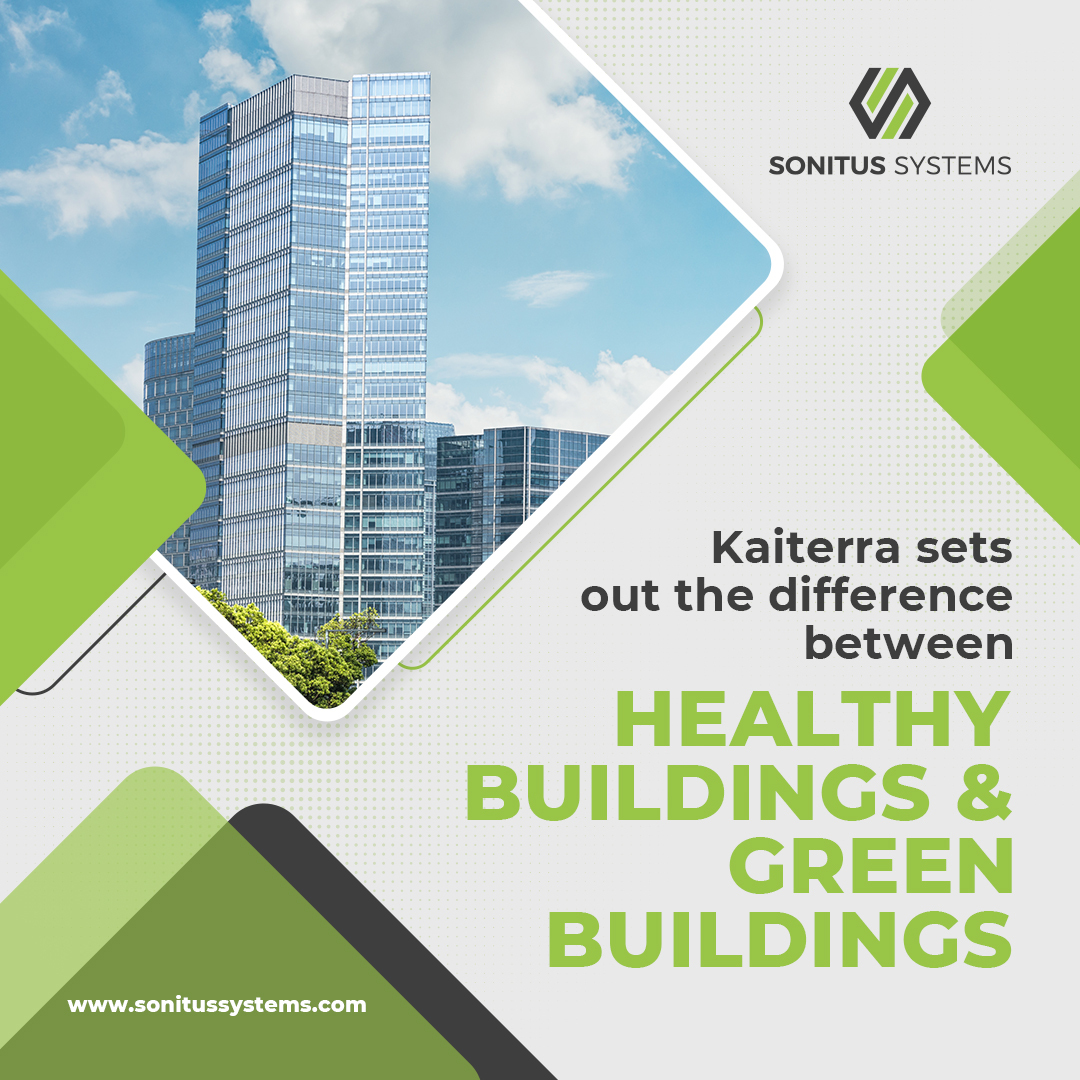Here at Sonitus Systems HQ, we are obsessed with making buildings healthier.
We do this by helping owners and operators to monitor indoor air quality and noise levels. With the right data, the right actions can be taken to improve the performance of any building across a range of environmental factors. But do these actions increase or decrease the ‘greenness’ of a building and its performance?
Our colleagues over at Kaiterra have delved into this in an article entitled: Healthy Buildings vs Green Buildings: What’s the Difference? You can read this article in full here: Healthy Buildings vs Green Buildings: What’s the Difference?
Healthy Buildings
The above article quotes a National Geographic interview with architect Johnathon Penndorf, wherein he explains: “In building, wellness is the new sustainability.” It is a bold claim. And it is a good starting point for articulating what exactly constitutes a ‘healthy building’. At its simplest, a healthy building is one that prioritises the health and wellbeing of the occupants, from design and construction, right through to the operation and daily performance of the building.
UK proptech advocate, Antony Slumbers, regularly reminds us of the industry fundamentals, which include the fact that humans spend close to 90 percent of our time inside, whether that is in our homes, our workplaces, socialising or in public transport. It follows that the environmental factors within those spaces will have a massive impact on human health. While light and acoustics each have major roles to play in this, the single most important measure of a healthy building is the quality of the air circulating within. Recent data from the Lawrence Berkeley National Laboratory estimates that improving indoor air quality in workplaces and offices could add as much as $20 billion annually to the U.S. economy (no comparable European statistic available). Also, since the outbreak of Covid-19, indoor air quality has been an important topic of conversation amongst facilities managers, and healthy buildings have become the latest enticement to bring employees back into the office. (Read more: The Role of ‘Healthy Buildings’ in boosting productivity )
Green Buildings
So, what is a green building? The World Green Building Council defines a ‘green building’ as:
“A building that, in its design, construction or operation, reduces or eliminates negative impacts, and can create positive impacts, on our climate and natural environment.”
From that definition alone, it is clear that there are areas of overlap between green buildings and healthy buildings. Despite the key difference being focus – climate vs. human – the outcomes are closely linked, which is entirely unsurprising, given that climate issues are, in fact, human issues. For example, the use of non-toxic and sustainable construction materials, and a reduction in pollutants has a direct benefit for both the environment and for human health.
The Kaiterra article sums it up well; while there is a clear distinction between green buildings and healthy buildings, they are not completely separate and “many best practices and choices made in one field will also impact and compliment the other”. In fact, operational best practice might well be at the point where green meets healthy.
“The best example for this is indoor air quality monitoring – which is crucial for employee wellbeing and productivity on the one hand but can also be leveraged to dramatically reduce a building’s energy footprint on the other…”
The most important insight is that building owners and operators do not need to choose between a green building and a healthy building. Technology is the great enabler, improving operational costs, occupant comfort, and environmental consequences.
Not sure how to get started? Talk to the Sonitus team today…
Sonitus Systems offers both the hardware and software for a range of environmental parameters on a continual basis, with real-time information available through our Sonitus Cloud dashboard. For more details on our indoor and outdoor noise and air quality monitoring products and services, please contact the team at Sonitus Systems.
